In the image above, a group of Veneti celebrate New Year’s Day 1927 with host, Antonio Ceccato on his farm at Hanwood, 6kms from Griffith.
Photo from Italian Museum and Cultural Centre, Griffith.
A recent visit to Griffith has been a prompt to write about the Italian migrants who settled in the Murrumbidgee Irrigation Area from before World War 1. Three Italians found their way to Griffith from Broken Hill in 1913 and many followed over the next years. Many of the early Italians in the area were from villages in the province of Treviso in the Veneto region – Burso del Grappa, Castelcucco, Cavaso del Tomba, Crespano, Fonte, Paderno del Grappa, Possagno and Pedemontana del Grappa.
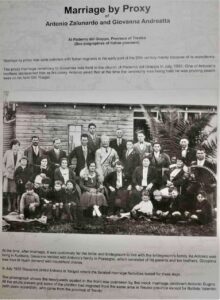
By 1921 there were 33 Italians in Griffith and this number increased to about 2,000 by the late 1940s.
Author Peter Kabaila outlines the challenges for the early Italian settlers of setting up farms in the Griffith area:
Many Italian settlers took up 5 acres of rented land, growing vegetables between their trees or vines, while waiting for them to bear. They lived in shacks and worked often from daylight till dark putting together the money they needed to repay the cost of their fare (and that of their wives), and to buy the farm that represented their goal
(Kabaila, “Griffith Heritage,” 2005, p 60).
Land parcels around Griffith had been allocated to Anglo Australian returned soldiers from World War I but within a few years, many were abandoned because the men did not have agricultural experience. Italians with their knowledge as contadini were able to take up the same land and make it profitable.

Italians started small businesses from the 1930s and a general store owned by two couples began importing goods such as olive oil and pasta and i migliori prodotti Italiani, that had not been available in the area. In 1936 three Veneto farmers established a social club that provided bocce courts and a venue for men to play cards. There was a locker system to get around licensing laws. Members purchased tokens equivalent to price of a bottle of beer and patrons collected bottles of beer from one of 300 lockers behind the bar. This system continued until a licence was granted in 1951.
Italians from other regions also were attracted to the Griffith area especially after World War II when large numbers of Abbruzzese and Calabrians, as well as Veneti, settled there. Between 1947 and 1950 2,300 Italian migrants arrived in the area. By the end of the 1960s, Griffith had more people of Italian birth per head of population than any other town or city in New South Wales.
Location of Griffith
Griffith developed because of the construction of the Murrumbidgee Irrigation Area (MIA) in the early years of the twentieth century. Regular supply of water via the irrigation channels has enabled the area surrounding the town to become a major producer of rice, citrus and stone fruits, vegetables, wheat, cotton, sheep, wool, eggs canola, and of course, wine.
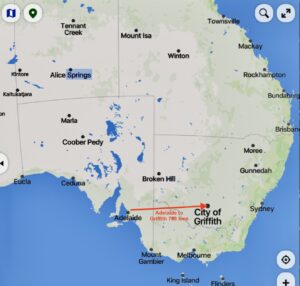
https://mapcarta.com/28025124
Today, the population of Griffith is approximately 27, 600 and people of Italian heritage make up about 60% of the wider Griffith region. In addition to the large Italian community, Griffith has substantial communities of Aboriginal people, Tongans, Samoans, Afghanis and Indians.
The Veneto influence
Men from three Veneto families provide an insight into the early initiatives to settle and contribute to the social and economic development in the Griffith area in the inter-war years.
Antonio Ceccato, 1888-1956
Antonio was born in Cavaso del Tomba and arrived in Australia in 1913, living and working first in Broken Hill. He married Pasqua Rosterolla (1893-1975) in 1922 and they lived in the Griffith area and became a successful builder. An early construction was the Coronation Hall in Yoogali for the Italian community and it became the venue for Saturday night dances and Veneto wedding receptions.
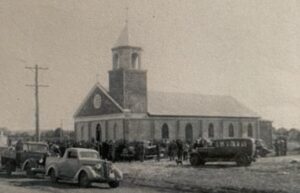
The Italian community recognised the need for a church in the district where many Italians had farms. They raised money and an Italian priest began to minister to the local Italians in the area. Funds were raised to build a church in Yoogali about 4.5 kilometres from the township of Griffith. Antonio modelled the design on a church in the village of Cavaso del Tomba and building it was a demonstration of the stability of the Italian community. The church was completed over two years and officially blessed in April 1940. It was dedicated to ‘Our Lady of Pompeii’, patron of Italians in foreign lands. It is listed on the NSW State Heritage Register.
Vittorio De Bortoli, 1900-1979
Vittorio was born in Castelcucco and arrived in Australia in 1924 and made his way to the Griffith where he worked on several local farms. By 1927 he was able to buy a 55-acre fruit farm which became the site of the family winery. Vittorio’s fiancee, Giuseppina, (1906-1997) joined him in 1928 and they were married and haad three children. Giuseppina learned English from a local school teacher and was involved in running the business. By 1931, De Bortoli wine was transported to Sydney and Queensland.
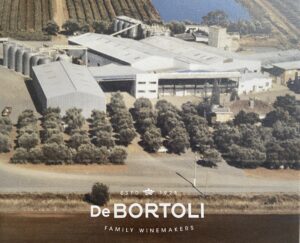

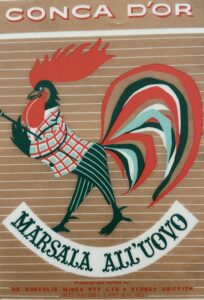
The family winery has expanded over more than 90 years and four generations. De Bortoli wines have vineyards and facilities in the Yarra Valley, King Valley and Hunter Valley and in 2018, purchased Rutherglen Estate.
Angelo Rossetto, 1903-1981
Angelo originated from Cavaso del Tomba and arrived in Australia in 1923 and followed his brother to Broken Hill where he married Tullia Penasa, (1910-2000) the daughter of a couple from the Trentino area of northern Italy. Angelo and Tullia moved to Griffith and bought a farm in 1928 to grow grapes and then set up a winery which he built up with his two sons Giovanni and Alan. The first commercial production began in 1930. After 85 years of operation, the Rossetto winery was sold in 2016 to local winemakers, Dee Vine Estate.
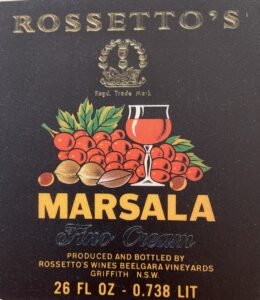
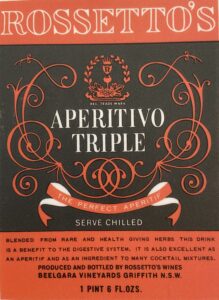
Italian museum and cultural centre
The museum was opened in 2004 and presents the history of the Italian migrants who established their lives in Griffith from the early 1900s. It was funded by the Italian community and Arts New South Wales.

Based on four themes, Immigration, Improvisation, Tradition and Consolidation, the museum has an extensive display of objects donated by families, videos and memorabilia.
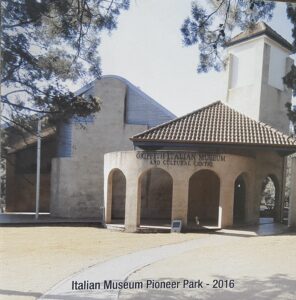
A series of graphic panels with beautiful photos illustrate the experience of Italian people in the Griffith area. There are panels representing different Veneto associations in the Griffith region: the Alpini, Trevisani, Veronese and Vicentini. The museum acknowledges the contribution of the Italian community to the social, economic, cultural and physical development of Griffith and the Murrumbidgee Irrigation Area.
Madeleine Regan
19 November 2023
Madeleine Regan
19 November 2023
References
*Jennifer Cornwall, Fruits of our Labour: The History of Griffith’s Italian Community, Griffith City Council, 2007. (This is a free pdf)
*Peter Kabaila, Griffith Heritage, Pirion Publishing, Canberra, 2005. (This is a free pdf)
*Griffith Italian Heritage Trail brochure prepared by the Griffith City Council with assistance from the NSW Department of Planning, the Heritage Council of NSW and the Migration Heritage Centre NSW.
*Italian Museum and Cultural Centre, Pioneer Park, Griffith
Photos taken by Madeleine Regan.
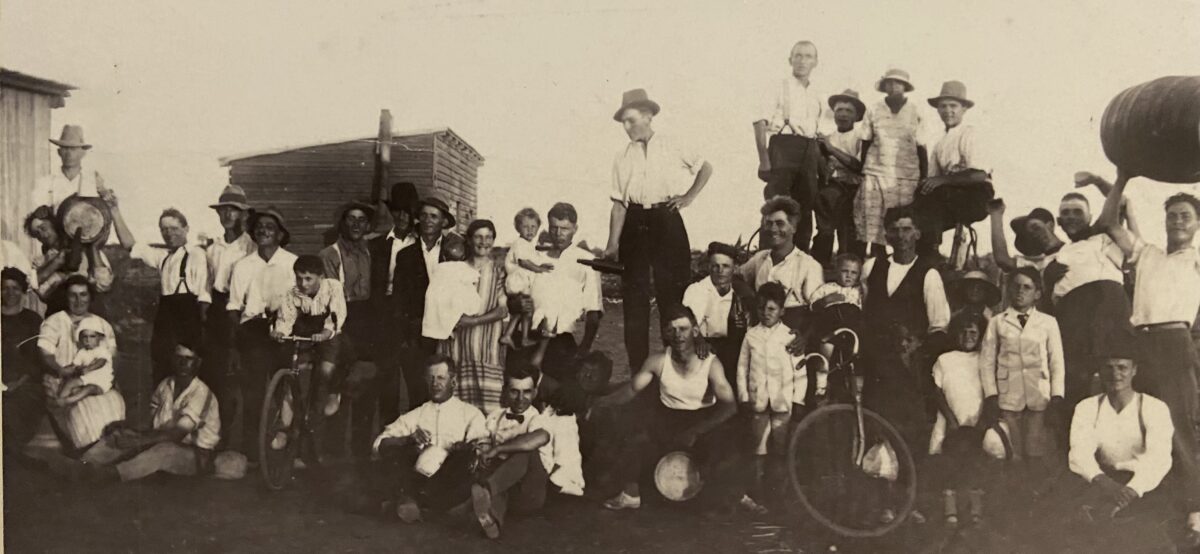
During a holiday in Australia in 2005, a group of 9 of us, coming from Riese Pio X and towns close by, arrived in Griffith for a couple of days, as it is a “sister city” of our town Riese Pio X in the Veneto Region. It was the first time there for all of us, and by coincidence on Sunday 21st August, we attended the Holy Day Mass dedicated to Saint Pius X who was born in Riese Pio X and who is the Patron Saint of the Italian association “TREVISANI NEL MONDO” which also has a presence in Griffith. I will never forget that day because after the morning mass we were all invited to a barbecue where we were surronded and interviewed by the many Veneti who live in Griffith just talking to them about Veneto and Italy. A Riese born citizen of Griffith, Bruno Guidolin, showed us through the local Cemetary and we were impressed by the number of tombstones bearing an image of Saint Pius X.
Thank you, Remo, for adding the information about your visit to Griffith in 2005. It must have been a great experience to be present for the commemorative Mass to honour Saint Pius X and to be part of the Italian community celebrations.